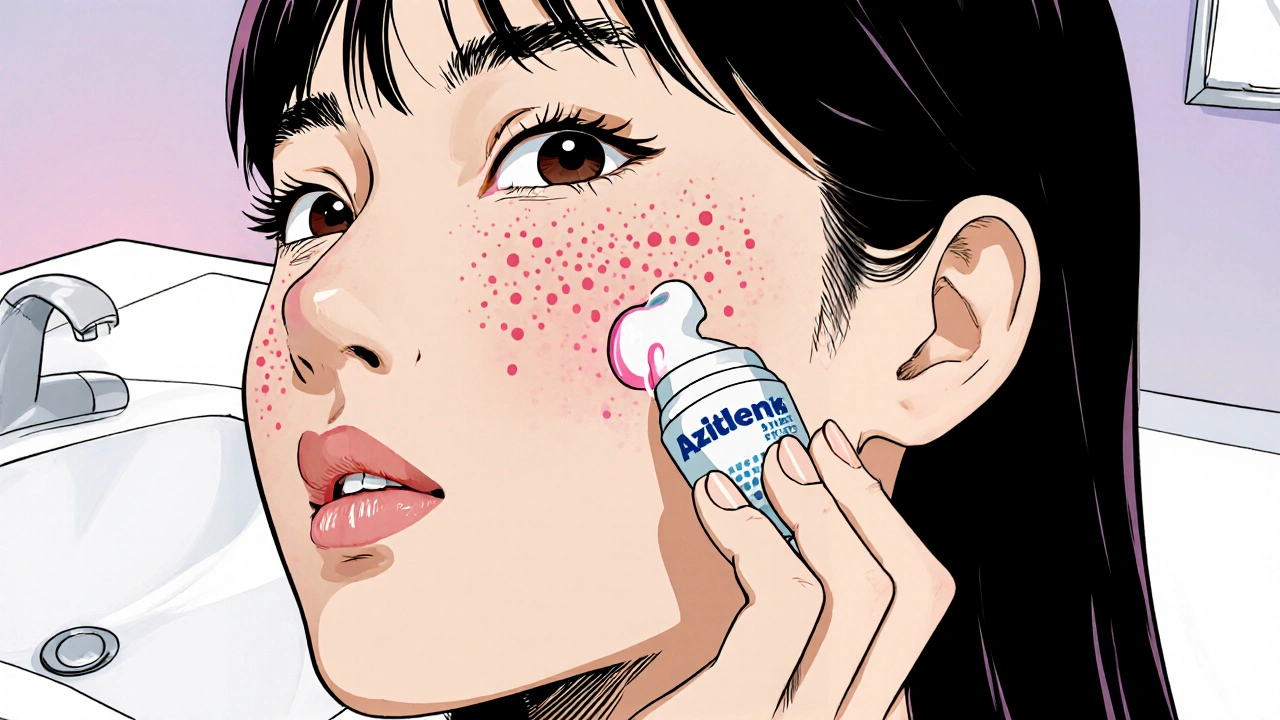Explore how Aziderm Cream stacks up against top acne treatments like Differin, benzoyl peroxide, retinol, and more. Find the best fit for your skin type, budget, and concerns.
Azelaic Acid: What It Does, Who It Helps, and What You Need to Know
When it comes to treating stubborn acne and red, irritated skin, Azelaic Acid, a naturally occurring dicarboxylic acid used in dermatology to reduce inflammation and kill acne-causing bacteria. Also known as azelaic acid cream, it’s one of the few ingredients that works for both acne and rosacea without drying out your skin. Unlike harsher treatments like retinoids or benzoyl peroxide, Azelaic Acid doesn’t strip your skin—it calms it. That’s why dermatologists often recommend it for people with sensitive skin, pregnant women, or anyone who can’t tolerate stronger prescriptions.
It’s not just for breakouts. Rosacea, a chronic skin condition causing redness, visible blood vessels, and sometimes bumps on the face. Also known as facial flushing disorder, it affects millions and often gets worse with heat, stress, or certain foods. Azelaic Acid helps by reducing the inflammation that triggers flare-ups. Studies show it works as well as antibiotics for mild-to-moderate rosacea, but without the risk of antibiotic resistance. And if you’re dealing with post-acne dark spots, Azelaic Acid gently fades them over time by slowing down excess melanin production. It’s one of the few treatments that tackles multiple skin issues at once: redness, bumps, and discoloration.
What makes Azelaic Acid stand out is how it fits into everyday routines. You don’t need a prescription for lower-strength versions, and even the stronger ones are often well-tolerated. It pairs well with other skincare staples like sunscreen, niacinamide, and gentle cleansers. But it’s not a miracle cure—you need consistency. Most people see results after 4 to 8 weeks, not days. If your skin is reacting badly, it’s not usually the Azelaic Acid—it’s probably the base formula or another product you’re layering on top.
People often ask if it’s like salicylic acid or benzoyl peroxide. It’s not. It doesn’t exfoliate the surface or blast bacteria with oxygen. Instead, it works deeper, targeting the root causes of irritation and overactive skin cells. That’s why it’s a go-to for long-term management, not just quick fixes. And unlike some acne treatments that make your skin sun-sensitive, Azelaic Acid is safe to use during the day—just don’t skip sunscreen.
Below, you’ll find real-world comparisons and practical guides on how Azelaic Acid stacks up against other treatments, what to pair it with, and how to avoid common mistakes. Whether you’re new to skincare or trying to fix a stubborn flare-up, these posts give you the clear, no-fluff info you need to make smart choices for your skin.

